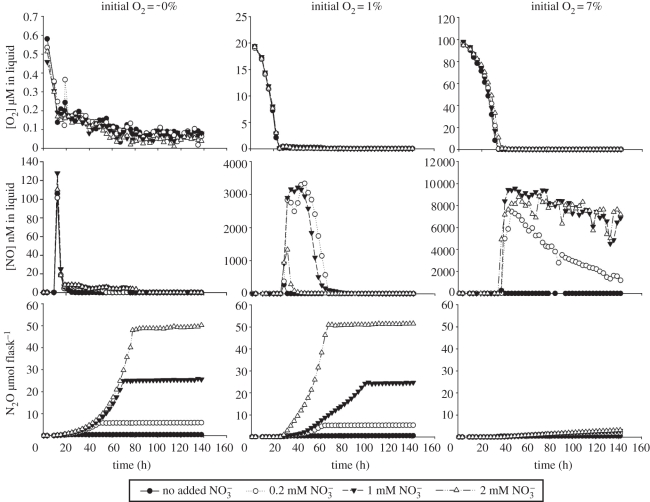Figure 3.
Denitrification phenotype of Agrobacterium tumefaciens, conditions similar to that for P. denitrificans (figure 2), but at three different initial concentrations of oxygen (indicated at top) and four concentrations of nitrate. The treatment ‘No added NO3−’ contains 17 µM NO3−as a part of the basal Sistrom's medium. Agrobacterium tumefaciens lacks N2O reductase, hence N2O is the end product. At initially low oxygen concentrations (∼0 v/v %), the cell density is low, hence depletion of oxygen is slow, and the organisms are able to perform a reasonably balanced transition from oxic to anoxic denitrification (marginal amounts of NO accumulates transiently). At high initial oxygen concentrations (7 v/v %), oxic growth secures high cell density prior to oxygen depletion, hence final depletion of O2 occurs very fast, resulting in unbalanced denitrification and paralysingly high NO concetrations. The figure is adapted from Linda Bergaust, PhD thesis 2007, Norwegian University of Life Sciences. The figure is a corrected version of fig. 2 in Bergaust et al. [39], which had seriously underestimated NO concentrations (the Journal refused to accept this as an erratum).

